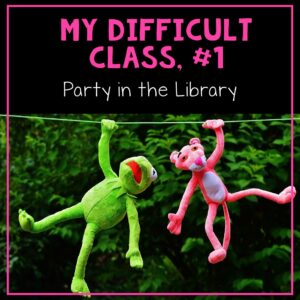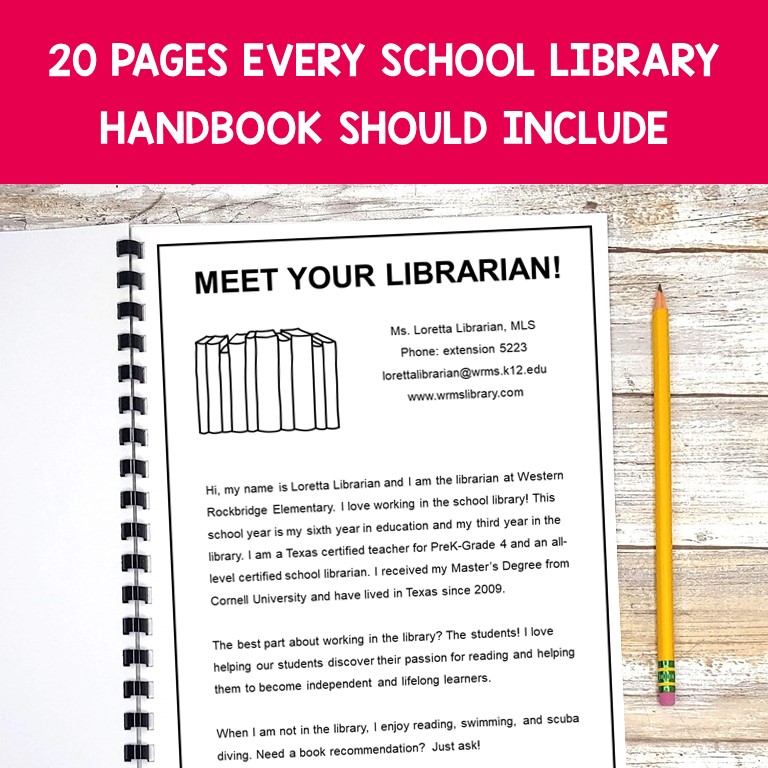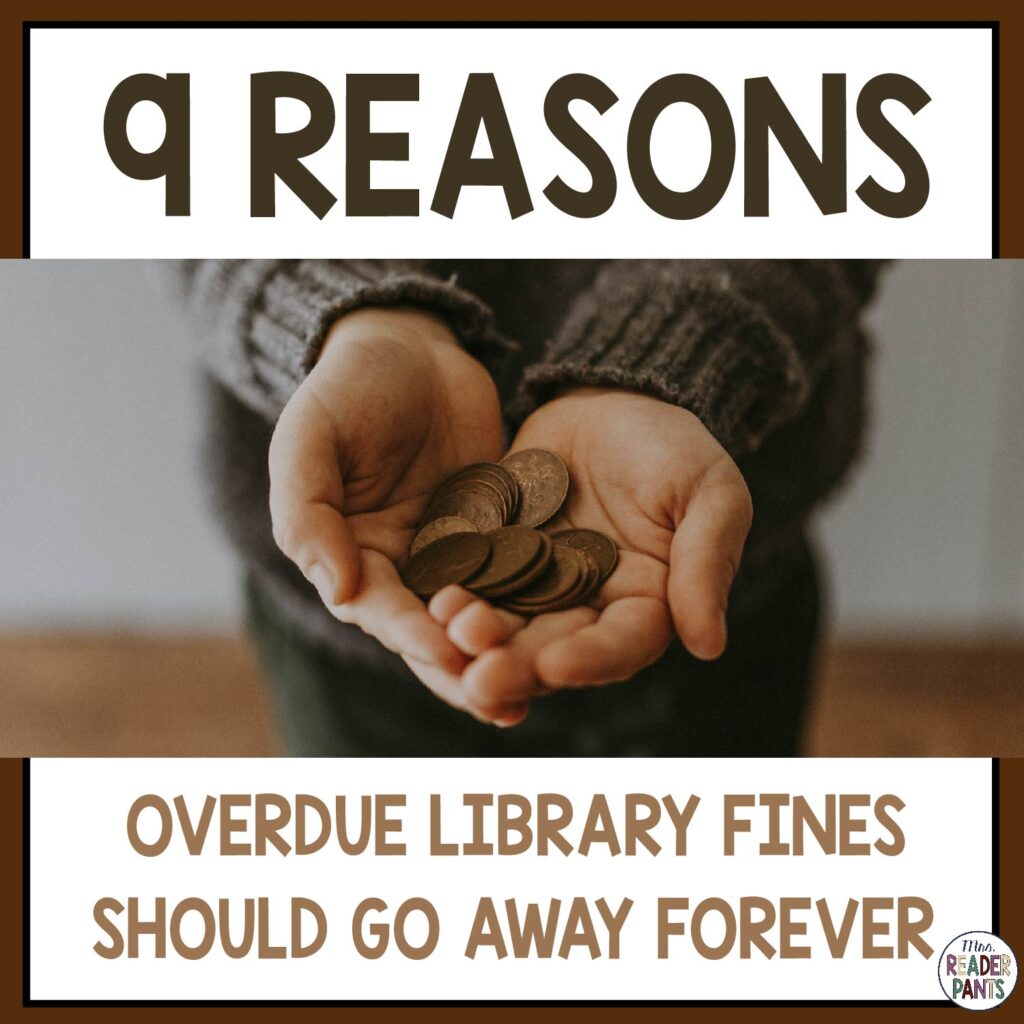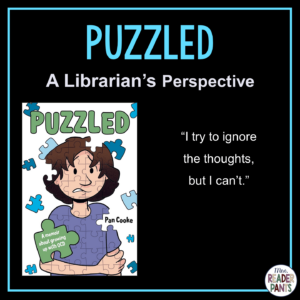
My year as an elementary Specials Rotation Librarian nearly ended my library career.
I was a Specials librarian for only one year. It was all I could do. The Specials rotation ultimately gave me the gentle shove I needed to get back into a middle school setting. I left my school the next school year to open a brand-new middle school in the same school district. When I applied as the middle school librarian, I was also prepared to apply as an English teacher. Anything to get out of another year on the Specials.
FROM FLEX TO FIXED
I went into Specials after four years on a flexible schedule. At first, I embraced the opportunity to be “on the rotation.” No one could ask me to cover for absent teachers, something that happened regularly when I was on a flex schedule. Whoohoo! I would also no longer have to figure out how to accommodate schedule changes for snow days, assemblies, and random teacher requests to reschedule. Because library would now serve as cover for teacher conference periods, classes were far more likely to arrive for library on time.
LIFE WOULD BE SO MUCH EASIER, RIGHT?
WRONG. Sure, my days of covering classes at a moment’s notice were over. It definitely helped me keep my schedule predictable. But, y’all, being a Specials Rotation Librarian was HARD. I had six 50-minute classes every day, in all six grade levels, K-5.
That meant that on Mondays, I had to have lessons for all six grade levels, right from the first day of the week. I had to plan my lessons well, or some of my more chaotic (not to mention large) classes would quickly get out of hand.
Worst of all, I had only 5 minutes between the classes, so my ability to use the restroom and sip my cold coffee was also gone. This girl needs her potty and coffee, people!
THE FRIDAY ASSEMBLY = MORE TO PLAN
Technically, I had first period “off” for my conference period. I needed first period to decompress and clean up after the 60+ students who chose the library over the cafeteria before school. I’m sure you can imagine how busy my mornings were!
But–as many teachers also experience–this “conference period” disappeared quickly. The other three Specials teachers and I were charged with running an assembly every Friday morning (also during our conference period). We spent at least two of our conference periods planning for the Friday assembly. The group elected me to be the emcee of those events because I was the only one who felt comfortable speaking in front of a crowd of 1000 students, teachers, administrators, and parents. If you’ve ever planned an assembly, then you know how much work it would be to be in charge of planning one EVERY FRIDAY.
NO OPEN CHECKOUT
I also hated not having the opportunity to do open checkout during the school day. The students and teachers wanted open checkout, too.
Technically, I had a full-time library aide. Unfortunately, she was pulled for so many other tasks (class cover, lunch duty, testing) that I could not rely on her being in the library. Who would help students check out while I was with a class? I’m sad to say that two years after I went up to middle school, district administrators cut all library aide positions in our district anyway.
FAMILY ISSUES
Add into this that I was also a mom of two young boys. This was the school year that my toddler was sick pretty much all the time (asthma, food allergies, and lactose intolerance were ultimately the diagnosis). It was also the year that my three-year old broke his arm on the playground at his preschool. In addition to having surgery on his broken arm, he was also hospitalized twice that school year for pneumonia. Thankfully, my principal was a single mom of two young boys. She may not have liked my 17 absences that year, but at least she understood.
MY EXPERIENCE IS NOT UNIQUE
Maybe you are reading all this and thinking that my experience was probably unusual. Most librarians are not planning weekly assemblies or seeing six 50-minute classes a day or dealing with sick babies…right?
I am here to tell you that my situation is not unique. Maybe all specials rotation librarians aren’t planning assemblies, but they may be teaching ESL classes. Maybe they are also the testing coordinator or campus technology integrator at their school. Maybe they coach after-school teams or sponsor extra-curricular clubs.
MY MOST DIFFICULT YEAR IN EDUCATION
Being a Specials librarian is enough, all by itself. It was the hardest year of my 18 years in education, and it was my 8th year in education!
Ultimately, I applied for (and got) the librarian position at the new middle school. When I applied, I knew that if I didn’t get the library job, I would apply as a middle school English teacher instead. If I was going to teach six 50-minute classes every day, I wanted to teach the same 180 students each week. Not all 750 students in the school.
I wanted to know all my students names. I wanted to know them individually. I did not want to be in a “turn-em-and-burn-em” environment where I felt more like a babysitter than an important member of the teaching staff.
For me, the Specials rotation was not sustainable.
It did not jive with my philosophy for the library.
And it was just so hard.
ARE YOU A SPECIALS ROTATION LIBRARIAN?
I know many librarians do Specials and do them well. If you are thriving in the Specials rotation–or at least keeping your sanity intact–I am in awe of you. To me, you have a superpower that I absolutely do not possess.
If you are a Specials librarian wondering if maybe library wasn’t the right path for you, I encourage you to seek a different situation. I loved every minute of being a middle school librarian, and later as a 6-12 librarian. As I loved being an elementary librarian for the four years I was not on Specials.
If you aren’t enamored with Specials, I encourage you to apply for middle or high school positions. Or, look for elementary schools with libraries on a flex schedule, as I had enjoyed for my first four years. Talking to your principal about taking the library out of Specials may also work, but I personally found that to be a dead end. I get it: many schools are just understaffed and out of options.
YOU MIGHT ALSO LIKE:

















